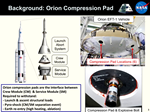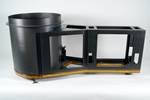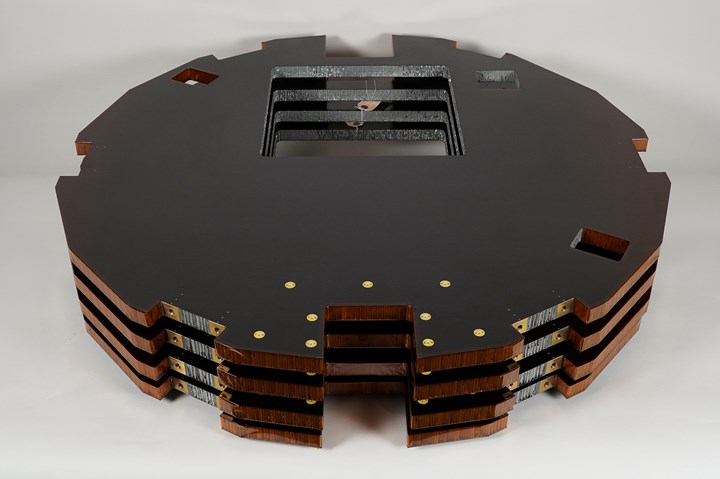Rock West Composites supports DiskSat satellite assemblies
Space-grade Strato panels line was incorporated into the small spacecraft platform’s solar array substrate/backup structure assemblies design, reducing costs, lead time and meeting positional tolerance without fixtures.
Rock West Composites (RWC, San Diego, Calif., U.S.) has delivered four composite combination solar array substrate/backup structure assemblies to Aerospace Corp. (El Segundo, Calif., U.S.) in support of the DiskSat Program.
DiskSat is a NASA-funded technology demonstration program that seeks to verify the performance and deployment method of this new, small spacecraft platform. The disk-shaped satellite design has the potential to revolutionize smaller space missions through its high-power, large aperture form factor that fits in the circular cross-section of a rocket fairing. By using its own off-the-shelf, space-grade Strato products — spaceflight-ready high modulus fiber plates, sandwich panels and solar array substrates — RWC was able to significantly reduce lead time and cost, while helping define structural properties to support the mission’s innovations. If successful, follow-on missions are possible, and other prime contractors may look to use a similar form factor for volumetric and weight efficiencies.
Providing additional services for this build-to-print program, the RWC engineering team consulted on the design including layup, material selection, insert design, bonding methods and manufacturing strategy. RWC used its own product, the StratoSubstrate Leo class, to ensure a cost-effective solar array substrate. The team used an insert design that allowed for self-fixturing to a tight tolerance, avoiding a costly assembly fixture. The tolerances on the in-plane and out-of-plane inserts match to a global datum scheme, and tolerances were on the order of 0.010-0.020 inch positional.
According to the company, the use of StratoSubstrate Leo panel blanks significantly reduced raw material and blank lead time. StratoSubstrate Leo class panels use HR40/NB321 unidirectional prepreg, NB301 film adhesive, perforated aluminum honeycomb core and 0.002-inch HN Kapton. The inserts for the deliverable were BR-127 primed aluminum bonded with EA9394. The final assembly measures approximately 1 meter in diameter and 25 centimeters in thickness.
“Saving our customer cost and lead time for this program is exactly why we developed the Strato product line,” Jeremy Senne, RWC’s space segment director, says. “We are excited about the potential for this new form factor in the exploration of space.”
Related Content
-
Sulapac introduces Sulapac Flow 1.7 to replace PLA, ABS and PP in FDM, FGF
Available as filament and granules for extrusion, new wood composite matches properties yet is compostable, eliminates microplastics and reduces carbon footprint.
-
The lessons behind OceanGate
Carbon fiber composites faced much criticism in the wake of the OceanGate submersible accident. CW’s publisher Jeff Sloan explains that it’s not that simple.
-
Cryo-compressed hydrogen, the best solution for storage and refueling stations?
Cryomotive’s CRYOGAS solution claims the highest storage density, lowest refueling cost and widest operating range without H2 losses while using one-fifth the carbon fiber required in compressed gas tanks.

















